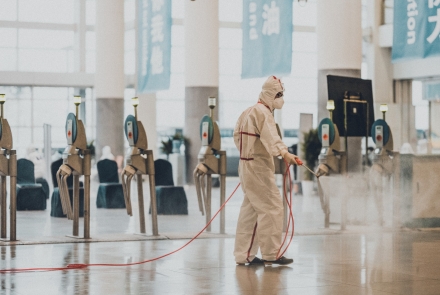
Photo by Tedward Quinn on Unsplash
Australia's coronavirus cases set to hit 5000 in coming days
COVID-19 cases projected to double every few days in Australia without sufficient physical distancing, biosecurity experts say.
New modelling from experts at The Australian National University (ANU) and the University of Melbourne shows Australia’s rate of COVID-19 infections is doubling about every seven days.
This is down from a doubling every four days a week ago.
Without adequate control measures and physical distancing, which Australia has started to initiate, the infection rate could rise as high as 20 persons per 100.
The economic, biosecurity and animal disease experts are urging immediate and stronger physical distancing measures to stop dead an exponential spike in coronavirus cases.
In the absence of sufficient physical distancing, possibly up to one-in-five Australians could have been infected, resulting in 48,000 additional premature deaths.
Professor Tom Kompas from the University of Melbourne and Professor Quentin Grafton from Crawford School of Public Policy have tracked infection rates against physical distancing measures. Their results are detailed in the specialist ANU publication Policy Forum.
“The data now tells us cases are currently doubling about every seven days in Australia, and although the daily rate of growth in infected cases has now decreased to 10 per cent, the growth pattern is still exponential,” Professor Kompas said.
“With our modelling, we project Australia will have between 5,080 to 5,970 cases at 6pm on 1 April – with the most likely number being 5,220 most likely.
“For 2 April the range is 5,510 to 6,835, with 5,715 most likely.”
Professor Grafton said the current rate of infection until the past few days is based on a lack of severe physical distancing, especially from some who have failed to observe self-isolation, which is needed to slow down community transmissions.
“The growth in infections over the next week or so is essentially locked in until we change how we physically distance ourselves from people outside our household,” Professor Grafton said.
“If we act today, then we may end up with an infection rate of one person in every 100. This is about the infection rate that China ended up with.
“By comparison, if we fail to control the infection and it continues to grow exponentially, Australia could end up with an infection rate of 20 persons per 100. This is the worst case and is not what we would expect.”
The researchers have also modelled potential premature deaths based on a mortality rate of one per cent.
“If we assume a mortality rate of one per cent, then not acting today to ensure sufficient physical distancing in Australia could, in the worst case, result in an additional 48,000 premature deaths,” Professor Kompas said.
“This is equivalent to about 30 per cent of the current annual deaths in Australia.
“These deaths would be clustered in the old and those with co-morbidities, including many in remote Indigenous communities if such places are not adequately protected.”
Professor Grafton said Australia needed to implement stronger lockdowns.
“While the future is uncertain, the outcomes of exponential growth are not,” he said.
“Not imposing a lockdown or equivalent measures comes at the cost of a higher infection rate which also means more non COVID-19 patients may die because there may be insufficient beds, medical equipment or staff to look after them.
“The low-risk approach to saving lives is for Australia to copy what New Zealand and the UK are already doing and to impose a ‘lockdown’ to ensure we have sufficient physical distancing.
“With much more testing and tracking of those with the virus, Australia can also have an exit strategy out of a ‘lockdown’ within a few weeks so that the infection does not bounce back.”
Policy Forum is a specialist website examining the Asia-Pacific’s key policy challenges published by the ANU Crawford School of Public Policy. Read the researchers’ article here.
Updated: 1 July 2024/Responsible Officer: Crawford Engagement/Page Contact: CAP Web Team












